News
A comfortable stay at Arniss Farm
Rainy Day Activities in the New Forest

Don’t let the rain ruin your plans. The New Forest is just as magical on a grey day, with plenty of ways to stay dry and still have fun. Whether you’re travelling with kids, exploring as a couple, or enjoying a solo retreat, there’s no shortage of things to do.
From cosy tearooms and relaxing spas to fascinating museums and wildlife centres, rainy day activities in the New Forest can turn a wet afternoon into a highlight of your trip. At Short Stay Homes, we’re here to help you make the most of every moment – rain or shine.
What Are the Best Museums to Visit on a Rainy Day?
The New Forest houses some remarkable museums, each offering unique experiences sheltered from the elements:
National Motor Museum at Beaulieu
The National Motor Museum showcases over 250 vehicles spanning motoring history. Children love the World of Top Gear exhibition, while adults appreciate the vintage cars and racing legends. Palace House itself merits exploration, with its fascinating interiors telling centuries of stories. The entire complex offers hours of entertainment, making it ideal when rain clouds gather.
New Forest Heritage Centre in Lyndhurst
Located in the heart of Lyndhurst, this centre provides the perfect introduction to forest life. Interactive displays explain the unique role of verderers and commoners, but don’t think it’s a once-off visit. Exhibitions rotate throughout the year. The centre is compact enough for a couple of hours and engaging enough to captivate visitors of all ages.
St Barbe Museum and Art Gallery
Lymington’s cultural gem combines local history with contemporary art galleries. The museum reveals tales of smugglers and shipbuilding, while rotating exhibitions showcase regional artists. Regular workshops and talks provide additional rainy day entertainment.
Book your next stay with us today at www.shortstayhomes.co.uk.
To view our current latest offers on our properties in the New Forest, Dorset, Salisbury and Devon, click here.
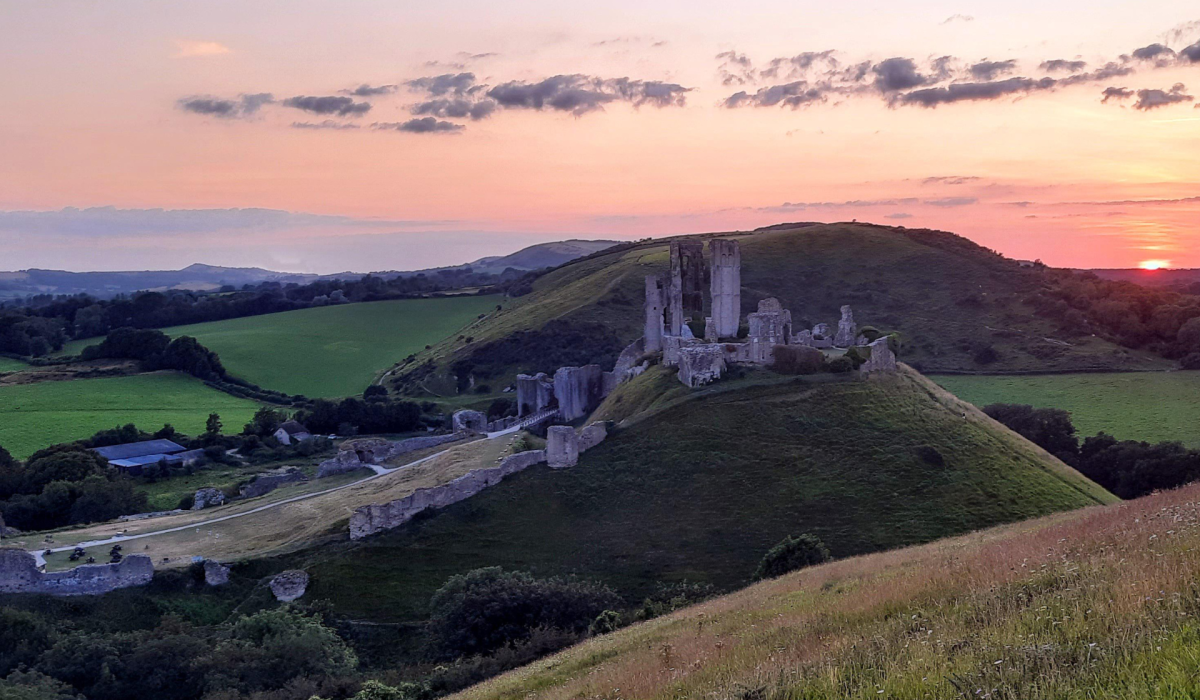
Where Can You Find Indoor Activities and Adventure?
Discover thrilling indoor activities and adventures that guarantee a memorable time, come rain or shine:
Calshot Activities Centre
Rainy days turn into action-packed adventures at Calshot. Try indoor climbing on towering walls, test your skills on the dry ski slope, or cycle in the velodrome. It’s a great spot for families, especially if the kids have energy to burn.
Sammy Miller Motorcycle Museum
Love classic bikes? You’ll be in your element here. Explore four exhibition halls filled with rare motorcycles and racing history. When you’re done browsing, stop by the tea room for a cuppa or pick up a keepsake from the gift shop. This place is a real treat, whatever the weather.
What About Theatre and Entertainment?
Looking for a dose of culture or a good laugh, no matter the weather? These venues offer a diverse range of performances and activities to keep you entertained:
Hanger Farm Arts Centre
Set in a charming 17th-century barn, Hanger Farm hosts a mix of comedy, live music, and theatre. Its welcoming, intimate atmosphere makes it a lovely place to escape the rain. During school holidays, kids can join in with creative activities and workshops too.
Forest Forge Theatre
This small but lively theatre features touring shows and in-house performances. They also run drama groups for all ages – ideal if you fancy getting involved. Keep an eye out for afternoon matinees, especially on those dreary days when you need a lift.
Where Are the Best Places for Afternoon Tea?
Nothing beats the British tradition of afternoon tea when rain patters against windows. The New Forest excels at this quintessential experience. Country house hotels serve tiered stands of finger sandwiches, warm scones, and delicate pastries. Many establishments offer champagne upgrades for special occasions.
Quaint village cafés provide more casual alternatives. Burley, Brockenhurst, and Beaulieu each boast charming tearooms. These intimate spaces often feature homemade cakes and local produce, creating authentic experiences away from chain establishments.
Can You Still Enjoy Tastings Indoors?
Rainy days are the perfect excuse to indulge in local flavours. If you enjoy a drink with a side of history, Burley’s cider house offers tastings straight from the barrel. Learn about traditional cider-making methods and sampling unpasteurised varieties. The rustic setting adds charm to this experience.
What Shopping Opportunities Exist for Rainy Days?
Lymington High Street provides excellent covered shopping. Independent boutiques line the Georgian streets, offering everything from designer clothing to artisan crafts. Duck between shops as needed, pausing in the many cafés dotting the route.
The Furlong Centre in Ringwood houses familiar brands under partial cover. While technically outdoors, the layout allows easy shop-hopping between showers. Farm shops throughout the region stock local produce perfect for self-catering stays.
How Can You Relax and Unwind Indoors?
New Forest spas offer the ultimate rainy day indulgence. Float in warm pools while rain drums overhead. Many establishments feature treatment menus ranging from quick manicures to full-day packages. Saunas and steam rooms provide cosy refuges from damp weather.
Several hotels open their spa facilities to non-residents and some offer special rainy day rates. Just make sure to book treatments in advance, particularly at weekends.
Making the Most of Your Rainy Day Adventures
Pick up a Go New Forest Card for great savings at local attractions, cafés, and indoor activities. Many places also offer family tickets, giving you better value if you’re exploring as a group.
Pack layers, even for indoor outings, as some older buildings don’t have modern heating. Keep your waterproofs handy for moving between venues. Most attractions have cloakrooms or lockers where you can stash wet gear.
Your Cosy Home Base
Your Short Stay Homes property is the perfect retreat after a day out. Our warm, well-equipped cottages offer everything you need to unwind. Many have log burners and snug lounges – ideal for drying off and relaxing with a hot drink.
Prefer to stay in? Stock up at a local farm shop and make the most of your kitchen with a home-cooked meal. Whether you’re venturing out or staying cosy inside, you’re set for a great stay. Ready to plan your next getaway? Contact Short Stay Homes to find the perfect place to stay, whatever the forecast.
Hidden Historical Sites in Dorset Worth Visiting
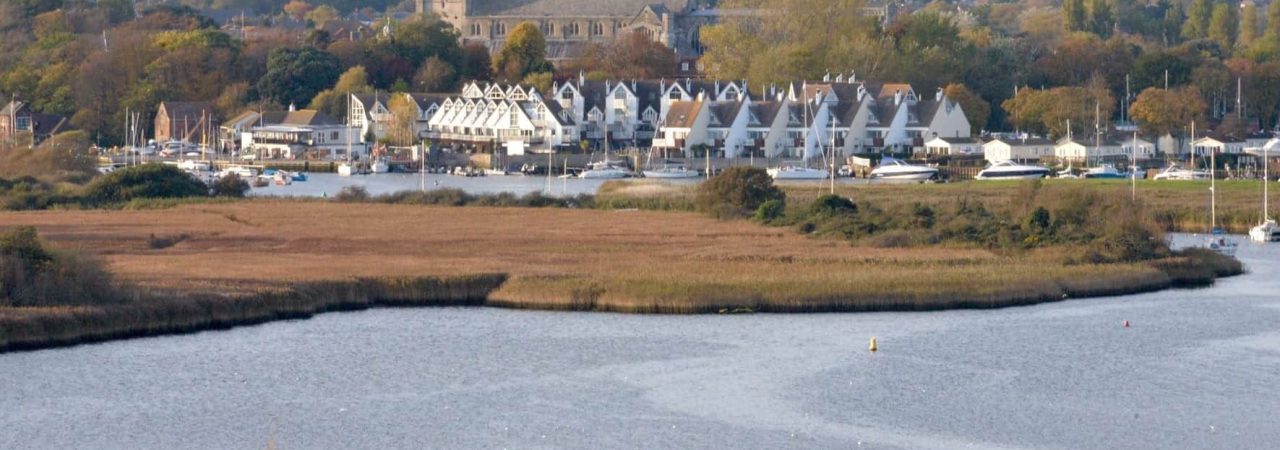
Hidden Historical Sites in Dorset
Dorset is full of history, but not all of it is in the guidebooks. Beyond the crowds at Durdle Door and Corfe Castle, there’s a quieter side to the county, where centuries-old stories wait in tucked-away corners of coast and countryside.
We’re shining a light on hidden historical sites in Dorset worth visiting. From remote hillforts to little-known chapels, these places offer a glimpse into the past without the crowds. Ready to explore? Let’s go off the beaten path.
Why Does Dorset Hide So Many Historical Treasures?
Dorset has been home to people for thousands of years. Each era left its mark – sometimes building over the past, sometimes beside it. Roman towns rose over Iron Age sites. Medieval churches appeared in places once sacred to earlier religions. Even Victorian writers drew inspiration from ancient ruins.
Many of these places survived because they were out of the way. Others were simply forgotten. Today, they offer a quiet reminder of the past, waiting to be discovered by those who look beyond the usual tourist spots of the Jurassic Coast.
What Ancient Mysteries Can You Discover at Knowlton Church and Rings?
Near Wimborne, Knowlton Church and Rings is a fascinating hidden site. Here, the ruins of a 12th-century church sit right in the middle of a 5,000-year-old Neolithic henge. The church was built intentionally within this ancient earth circle, a powerful symbol of the shifting beliefs from pagan to Christian.
Stories of strange lights and eerie sounds have surrounded the site for years. Paranormal or not, the setting is unforgettable. Mist curling over the fields, the quiet of the countryside, and the weight of history all create a hauntingly peaceful place to explore. It’s free to visit and usually quiet, making it ideal if you’re after a moment of calm or curiosity.
Book your next stay with us today at www.shortstayhomes.co.uk.
To view our current latest offers on our properties in the New Forest, Dorset, Salisbury and Devon, click here.
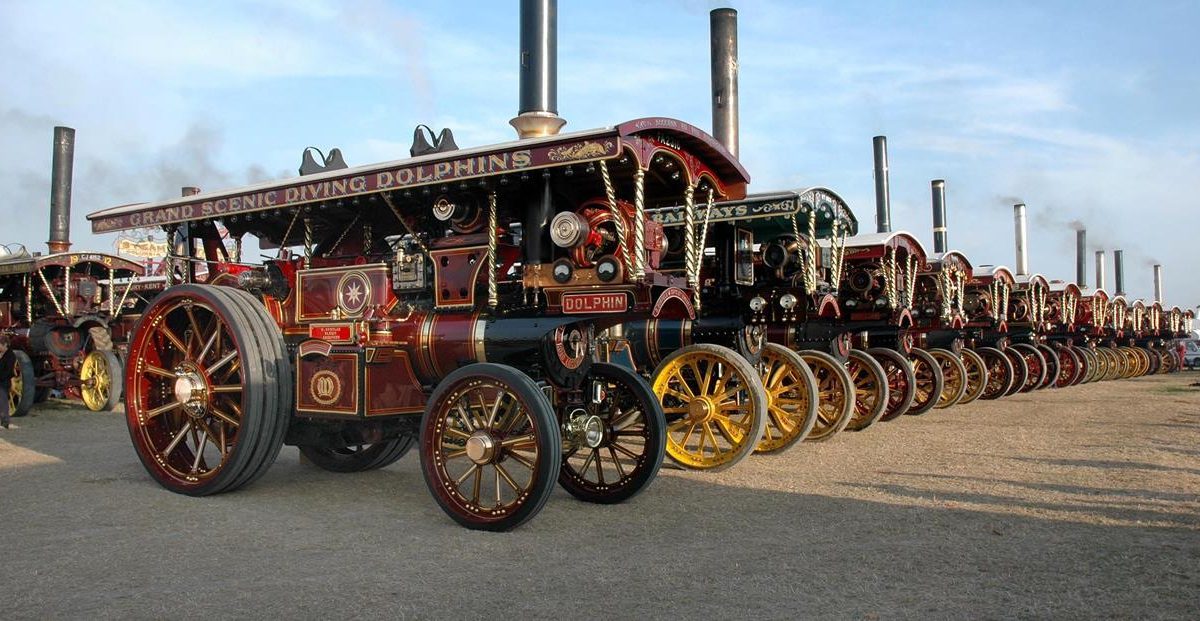
Which Iron Age Hillforts Rival Maiden Castle?
While Maiden Castle near Dorchester attracts the most attention as Europe’s largest Iron Age hillfort, several equally impressive sites receive fewer visitors:
Hambledon Hill
This spectacular hillfort north of Blandford Forum offers views across three counties. Its double ramparts once protected a community 2,500 years ago. Archaeological excavations revealed evidence of violent conflict, including sling stones and human remains bearing battle wounds.
Eggardon Hillfort
Perched 250 metres above sea level, Eggardon provides panoramic views of the Dorset coastline and countryside. The three massive ramparts remain remarkably intact, and on clear days you can see Portland Bill and the Purbeck hills.
Badbury Rings
This atmospheric hillfort near Wimborne features three concentric rings of ramparts topped with ancient beech trees. Legend claims King Arthur fought his greatest battle here. The site offers excellent walking trails and serves as home to multiple species of butterflies.
Where Can You Walk in Roman Footsteps?
Dorchester hides an extraordinary secret beneath its modern streets. The Roman Town House is a fully excavated example of its kind in Britain. Discovered during building work in 1937, this beautifully preserved villa showcases intricate mosaics, underfloor heating systems, and painted wall plaster.
The site tells the story of comfortable Roman life in ancient Durnovaria (Roman Dorchester). Interactive displays help bring the past to life, showing how wealthy Romans lived 1,700 years ago.
What Makes Tyneham Village So Hauntingly Beautiful?
The ghost village of Tyneham near the Purbeck coast offers a unique glimpse into wartime Britain. In 1943, the War Office evacuated all 225 residents, promising they could return after the conflict ended. That promise was never kept.
Now, the village remains frozen in time. Crumbling cottages line quiet lanes. The school still has lessons on the blackboard. The church is open to visitors, filled with heartfelt displays about the people who once lived there.
Note: Tyneham isn’t always open. It depends on military training schedules. But when it is, the experience is unforgettable. Peaceful, moving, and surrounded by scenic walks with views of Lulworth Cove and the coastline, it’s a place that lingers with you.
Which Medieval Ruins Tell the Most Dramatic Stories?
Looking for medieval ruins with real stories to tell? Dorset has more than its fair share. From Norman strongholds to Civil War battlegrounds, these sites offer drama, history, and stunning views. Here are two standout ruins where the past still lingers in every stone.
Christchurch Castle
Often overlooked by visitors heading to Bournemouth’s beaches, Christchurch Castle’s remaining walls represent fine Norman domestic architecture. The constable’s house, built around 1160, survives almost intact. Climb the mound for views across Christchurch Priory and the harbour beyond.
Sherborne Old Castle
Sir Walter Raleigh fell in love with this romantic ruin and tried desperately to make it habitable before building his new castle next door. The dramatic gatehouse and southwest tower survived two Civil War sieges. The grounds provide perfect picnic spots, especially in spring when bluebells carpet the area.
Where Will You Discover Dorset’s Hidden History?
These sites represent just a fraction of Dorset’s historical treasures waiting to be explored. From prehistoric monuments to abandoned villages, each location offers a unique story and atmosphere.
Short Stay Homes provides the perfect base for your historical adventures. Our comfortable holiday homes throughout Dorset put you within easy reach of famous landmarks and hidden attractions. After a day exploring ancient hillforts or mysterious stone circles, you’ll appreciate returning to modern comforts and perhaps a relaxing hot tub under the stars. Ready to uncover Dorset’s secrets? Contact us and start planning your journey through 5,000 years of history.
Soaring Overseas Holiday Prices? Why a UK Short Stay Is the Smarter Choice in 2025!

As peak summer approaches, families across the UK are rethinking their holiday plans.
A recent BBC News report reveals that the cost of all-inclusive package holidays abroad is soaring. Popular destinations like Cyprus, Turkey, and Spain have seen price hikes of up to 26%, with Cyprus now averaging £1,166 per person for a week in August. It’s no wonder that more people are questioning the value of heading abroad this year.
Rising energy prices, food costs, and hospitality wages have all contributed to the surge. In fact, many travel consultants have reported a sharp rise in customers looking for shorter breaks or mid-week stays to manage the expense. Others are waiting until the very last minute to grab last-second deals, sometimes even walking into agencies with passports in hand!
And while some travellers are still splashing out, booking premium packages or business class seats, many families are scaling back, tightening budgets, and hunting for domestic alternatives.
Why Staycations Make Sense
With the average cost of a foreign holiday creeping well past £1,000 per person, UK staycations are becoming increasingly attractive, not just for cost savings, but also for ease and flexibility. There’s no need to worry about flight delays, baggage limits, or currency exchange when you holiday at home.
The UK offers a wealth of destinations, from the Jurassic Coast to the New Forest, the Scottish Highlands to the Cornish coast. Whether you’re after adventure, relaxation, or a bit of both, there’s something here for everyone.
Discover the Comfort of Short Stay Homes
At Short Stay Homes, we provide the perfect base for your UK escape. Our luxury properties offer a home-from-home experience, with spacious living areas, private gardens, and pet-friendly options, which are ideal for family gatherings, celebrations and reunions.
This year, skip the airport queues and travel stress. Choose a UK short stay that combines value, comfort, and the beauty of Britain, without compromise.
Book your next stay with us today at www.shortstayhomes.co.uk.
To view our current latest offers on our properties in the New Forest, Dorset, Salisbury and Devon, click here.

Hampshire’s Most Scenic Hiking Trails

Hampshire’s Hiking Trails
Lace up your walking boots and prepare for an adventure! Hampshire is home to some of England’s best walking routes. From peaceful woodland paths to wide-open chalk downs, Hampshire’s most scenic hiking trails offer something for everyone, whether you’re after a relaxed countryside stroll or a more challenging day out.
We look at various trails that are perfect for soaking up fresh air, wildlife, and stunning views. And when your boots are muddy and your legs are tired, Short Stay Homes has you covered. Our cosy holiday properties across the New Forest, Dorset, and Salisbury offer the ideal base to rest, recharge, and plan your next walk.
What Makes New Forest National Park Perfect for Hiking?
The New Forest is a crown jewel for walkers. The landscape combines open heathland, dense woodland, and quaint villages, all connected by an extensive network of well-maintained paths.
Bolderwood Deer Sanctuary Trails
Near Lyndhurst, the Bolderwood area offers several walking routes suitable for all ages. The Deer Watch Trail spans just 0.3 miles, while the Radnor Trail extends to 1.9 miles. These easy-to-moderate paths take you through towering oaks and peaceful glades, where sunlight filters through the trees.
The real magic happens when you spot the local wildlife. Wild New Forest ponies graze alongside the paths, and if fortune favours you, you’ll glimpse herds of fallow deer from the dedicated viewing platform.
Lyndhurst Hill and Swan Green Loop
For those craving a more substantial hike, this 8.5-mile circular route from Lyndhurst delivers variety. The moderate trail includes gentle climbs that reward you with panoramic views across moorland, forest, and valleys.
You’ll pass through charming village scenes and discover traditional pubs perfect for refreshments. The iconic free-roaming ponies appear frequently along this route, adding to the authentic New Forest experience. The varied landscapes provide constant interest, making the miles pass quickly.
Book your next stay with us today at www.shortstayhomes.co.uk.
To view our current latest offers on our properties in the Hampshire, New Forest, Dorset, Salisbury and Devon, click here.
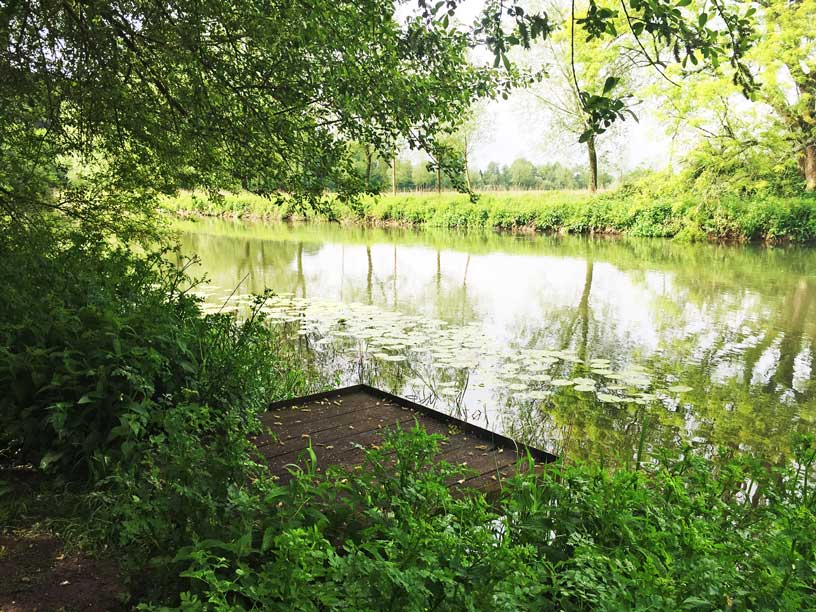
Where Can You Find Hampshire’s Best Valley Views?
Beyond the New Forest, Hampshire’s diverse terrain includes stunning downland and peaceful river valleys that offer equally rewarding hiking experiences.
Old Winchester Hill
Located near Exton within the South Downs National Park, this 5-mile circular walk combines natural beauty with ancient history. The moderate trail includes some ascents, but your efforts are richly rewarded. An Iron Age hill fort crowns the summit, offering expansive views across the Meon Valley. On clear days, you can even spot the Isle of Wight shimmering in the distance.
Spring and summer transform the chalk downland into a vibrant tapestry of wildflowers, attracting clouds of butterflies. This spectacular site feels worlds away from everyday life, yet remains easily accessible from various parts of Hampshire, including areas closer to Salisbury and the New Forest.
The Meon Valley Trail
Starting in West Meon and extending south towards Wickham, this gentle 10-mile trail follows a former railway line. The flat, accessible path makes it ideal for families and those preferring a more leisurely pace.
The route winds through picturesque villages and open meadows, running alongside the River Meon. Wildlife thrives here – keep your eyes peeled for kingfishers darting along the water and deer grazing in adjacent fields. The peaceful Hampshire countryside unfolds at a relaxed pace, allowing time to truly appreciate your surroundings.
Which Historic Trail Connects Two Cathedral Cities?
The Clarendon Way is a 24-mile path that links Salisbury Cathedral to Winchester Cathedral. However, you needn’t tackle the entire distance. Shorter sections provide perfect day hikes with varied terrain and stunning scenery.
The trail showcases diverse landscapes – rolling chalk downs give way to ancient woodlands, while charming villages and riverside paths add variety. Sections closer to Salisbury offer magnificent views of the cathedral spire rising above the surrounding water meadows. Walking even a portion of this historic route provides a true sense of Wiltshire and Hampshire’s heritage.
Planning Your Perfect Hiking Holiday
Before setting off on any trail, proper preparation ensures maximum enjoyment. Sturdy footwear proves essential, particularly after rain when paths become muddy. Pack plenty of water and snacks, and always check weather conditions before departing.
Remember, your four-legged friends are welcome to join these adventures. Many of our properties are pet-friendly, ensuring the whole family can enjoy Hampshire’s stunning countryside together.
Post-Hike Relaxation
After a day exploring Hampshire’s trails, nothing beats returning to luxury accommodation. Many Short Stay Homes properties feature hot tubs – imagine easing tired muscles while gazing at starlit skies. Spacious living areas provide room to spread out maps and plan tomorrow’s adventure. Fully equipped kitchens let you prepare hearty meals to refuel.
Ready to Explore Hampshire’s Scenic Trails?
Hampshire’s diverse hiking trails offer something special for every walker. From the ancient woodlands of Brockenhurst to the rolling hills near Petersfield, from the Solent coastline near Lymington to the peaceful meadows around Stockbridge, this beautiful county awaits your discovery.
Book your next scenic getaway with Short Stay Homes and experience these magnificent trails for yourself. Our luxury properties throughout the New Forest, Dorset, Devon, and Salisbury regions provide the perfect base for your Hampshire hiking adventures. Contact us to find your ideal holiday home.
The Best Beaches in Dorset for Families
Dorset’s coastline is packed with beautiful spots that are perfect for a family day out. Think golden sands, safe swimming, rock pools to explore, and plenty of space for picnics and games. Whether your kids love building sandcastles, hunting for fossils, or just splashing in the sea, you’ll find much to enjoy here.
To get you started, we’ve compiled the best family beaches Dorset has to offer. And from our luxury homes in Christchurch and West Moors, you’re just a short drive from some of the county’s seaside treasures. Your next family beach adventure starts here.

What Makes Dorset Beaches Perfect for Family Holidays?
Dorset has a beach for every kind of family day out. You’ll find wide sandy bays, pebbly shores, and dramatic cliffs with stunning views. Many beaches have shallow water and gentle slopes, perfect for little ones to paddle and play safely.
The Jurassic Coast, a UNESCO World Heritage Site, adds an extra touch. Kids can hunt for fossils and learn a little something about life long ago. Plus, most beaches have handy facilities like toilets, cafés, and lifeguards, making your day easy and enjoyable.
Top Sandy Beaches for Families in Dorset
Looking for soft sand, safe waters, and plenty to keep the kids entertained? These family-friendly sandy beaches in Dorset tick all the boxes.
Weymouth Beach

Weymouth Beach is the quintessential British seaside destination. Its long stretch of golden sand and shallow waters is perfect for little paddlers. Children will delight in traditional donkey rides, Punch and Judy shows, and building sandcastles on this award-winning beach. The bustling promenade offers ample food options, while the nearby SEA LIFE Centre provides entertainment if the weather turns.
The beach’s shelving shore makes it particularly safe for younger swimmers, and RNLI lifeguards patrol during summer. After a day on the sand, take a family stroll around Weymouth’s picturesque harbour for ice cream or fish and chips.
Studland Bay

Studland Bay, managed by the National Trust, offers four miles of pristine sandy beach with views toward Old Harry Rocks. The sheltered bay provides calm waters perfect for family swimming, while the backing dunes create natural play areas for adventurous children.
Studland’s main beach, Knoll Beach, offers excellent facilities, including a café, shop, and toilets. Nature-loving families can explore the diverse habitats behind the beach, home to rare birds and sand lizards. The National Trust runs family activities during school holidays, including guided walks and rockpool rambles.
Avon Beach

Located in Christchurch, Avon Beach is just a stone’s throw from our Quay House and Quay Corner properties. It’s sheltered and features colourful beach huts, clear waters, and stunning views of the Isle of Wight.
The beach slopes gently into the sea, creating safe paddling areas. The nearby Noisy Lobster restaurant serves family-friendly meals with spectacular sea views. With easy parking and excellent facilities, Avon Beach makes for a hassle-free family day out.
Sandbanks Beach

Frequently named among Britain’s best beaches, Sandbanks has earned the prestigious Blue Flag award more times than any other UK resort. The peninsula boasts soft sand and excellent water quality, with facilities catering to families.
Children will love the beachside play areas, crazy golf course, and volleyball courts. The calm waters are perfect for swimming and watersports, with equipment hire available nearby. Sandbanks offers everything needed for a perfect family beach day, including cafés, toilets, and lifeguard coverage.
Where Can Families Enjoy Coastal Adventures?
Ready for a beach day with a bit more adventure? These Dorset spots offer more than just sun and sand.
Lyme Regis

Lyme Regis offers four distinct beaches and is the jewel of the Jurassic Coast for fossil enthusiasts. The town beach provides sandy shores perfect for traditional beach activities, while Monmouth Beach to the west is renowned for its ammonite fossils.
Beyond fossil hunting, families can enjoy the Marine Aquarium, boat trips, or crabbing from the famous Cobb harbour wall. The town offers charming shops, museums, and plenty of places to refuel after a day of coastal exploration.
West Bay

Made famous as the backdrop for the TV drama Broadchurch, West Bay combines striking cliffs with a bustling harbour atmosphere. Children will love crabbing from the harbour walls, exploring the shingle beach, or simply watching fishing boats come and go.
There are grassy picnic areas, and the harbour boasts seafood kiosks serving the freshest local catch. Active families can follow the South West Coast Path for spectacular views, while the nearby play area provides additional entertainment for younger visitors.
Lulworth Cove and Durdle Door
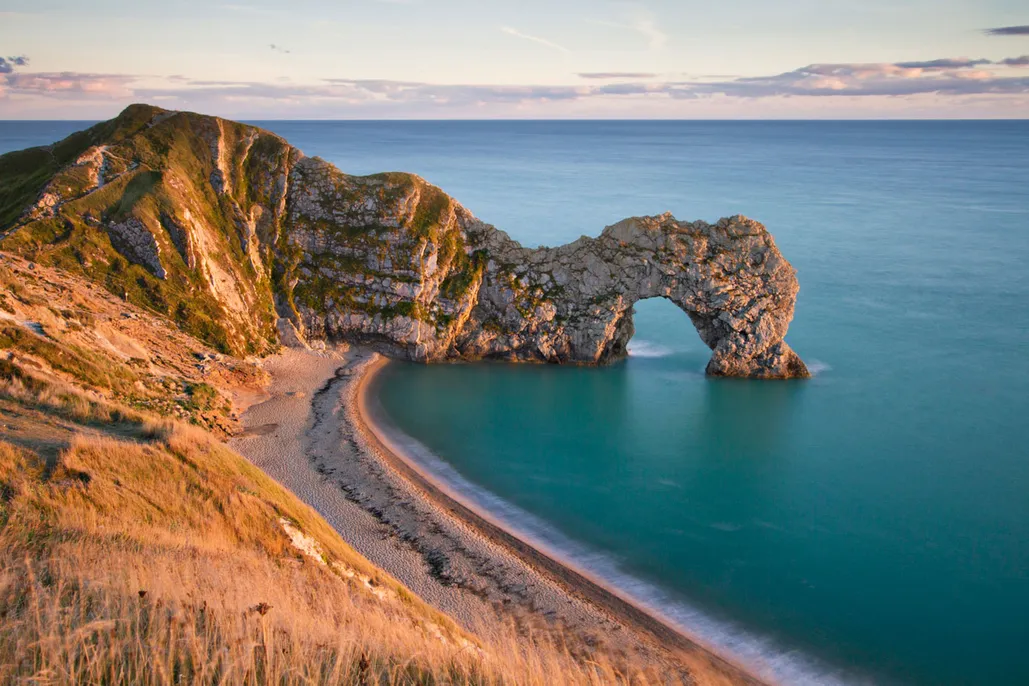
These iconic limestone formations provide a magical setting for family beach adventures. The perfectly curved Lulworth Cove offers sheltered swimming and rock pools teeming with marine life. A short walk along the cliff path leads to Durdle Door, where the stone arch rises from the sea.
While the pebble beaches require appropriate footwear, the scenery and waters make these spots unmissable. The Lulworth Estate visitor centre offers educational displays about the area’s unique geology.
Which Dorset Beach Offers the Best Facilities?
This Dorset beach has great facilities, from playgrounds and cafés to lifeguards and clean loos.
Alum Chine Beach

Quieter than neighbouring Bournemouth beaches, Alum Chine has facilities including toilets, lifeguards, and lost children services. The pirate-themed playground adjacent to the beach provides entertainment beyond sandcastle building, and the tropical gardens offer shaded relaxation.
The beach itself boasts soft sand and clean, safe swimming waters. Regular land train services connect Alum Chine to Bournemouth Pier, adding extra excitement for younger visitors.
How to Make the Most of Your Dorset Beach Holiday
Beach safety is paramount. This means checking tide times, swimming between the flags on lifeguarded beaches, and being aware of cliff fall risks. Most Dorset beaches have seasonal dog restrictions, so check before bringing four-legged family members.
For fossil hunting, beaches around Charmouth and Lyme Regis offer the best opportunities. Remember to only collect loose fossils and never dig into cliffs, which can be dangerous.
Your Perfect Base for Dorset Beach Exploration
Our luxury Dorset homes are the ideal base for exploring the county’s stunning coastline. Stay at The Quays in Christchurch and you’ll be just minutes from Avon Beach and the harbour. Or choose Galtons Cottage in West Moors for easy access to the coast and inland spots.
After a fun-filled day of sun, sand, and sea air, head back to a space where the whole family can unwind in comfort. Ready to start your Dorset escape? Book your stay with Short Stay Homes or contact us with any queries.
Things to Do in Salisbury
Salisbury is a medieval gem nestled in the heart of Wiltshire, offering visitors a unique blend of ancient history, stunning architecture, and quintessential English charm. Whether you’re planning a weekend getaway or a longer stay, this historic city promises countless opportunities for exploration and discovery.
From its world-famous cathedral to the mysterious Stonehenge nearby, Salisbury offers unforgettable experiences for every type of traveller in 2025.
What Makes Salisbury Cathedral So Special?

Dating back to 1258, Salisbury Cathedral is not only an architectural masterpiece of Early English Gothic style—it also houses treasures that set it apart.
- The Magna Carta: The cathedral is home to one of only four surviving original copies of the Magna Carta, the foundational document of English liberty and law.
- World’s Oldest Working Clock: Built in the 1300s, this incredible mechanism is still ticking today and can be found on the left side of the nave.
- Britain’s Tallest Spire: Soaring to 123 metres, the spire offers panoramic views from the tower.
Visitors can enjoy breathtaking stained-glass windows, 13th-century tombs, and a peaceful stroll through the North Gate to the River Avon meadows for a perfect view of the cathedral reflected in the water.
Where Can You Experience Medieval Salisbury?
The Historic City Centre
Salisbury’s old city centre is a living museum. Begin at Poultry Cross, a market site dating to the 1300s, where markets still run every Tuesday and Thursday.
Explore:
- St. Thomas of Canterbury Church: A stunning example of 15th-century architecture.
- Plume of Feathers Inn: A traditional spot for refreshment.
- Joiner’s Hall, Guildhall, and the Red Lion Hotel: Representing 17th, 18th, and 20th-century styles respectively.
Cathedral Close
This peaceful area surrounding the cathedral is filled with historic homes and buildings:
- Mompesson House: A preserved Queen Anne townhouse.
- The Salisbury Museum: Located in King’s House, it displays regional archaeology, including the Amesbury Archer.

What Ancient Sites Await Beyond the City Centre?
Old Sarum
Only 1.5 miles north of the city, this Iron Age hillfort was once Salisbury’s original settlement. It offers sweeping views and ruins from Roman to Norman eras.
Stonehenge
Located on Salisbury Plain, Stonehenge is a World Heritage Site dating back 4,000+ years. The site features:
- Massive prehistoric stone circles.
- Reconstructed Neolithic houses.
- Interactive exhibits.
Where Else Should You Explore?
Wilton House
A baroque country mansion rebuilt in 1653, known for the stunning Single and Double Cube Rooms and royal portraiture.
The Haunch of Venison
Dating back to the 1300s, this legendary chophouse offers traditional English fare and medieval ambiance.
Salisbury Racecourse
Catch the thrill of live races from April to October, including major fixtures like the Cathedral Stakes and Sovereign Stakes.
Paultons Park
A family-friendly theme park in the New Forest. Attractions include:
- Peppa Pig World
- Lost Kingdom (dinosaurs)
- Tornado Springs (American-themed rides)
Haynes Motor Museum
A must-visit for car enthusiasts, with over 400 vehicles from 1885 to today.
Plan Your Perfect Salisbury Stay with Short Stay Homes
Salisbury offers an incredible mix of history, culture, and natural beauty. Whether you’re exploring ancient monuments, wandering medieval streets, or soaking in the atmosphere of this timeless city, you’ll need the perfect base.
Short Stay Homes provides luxury self-catering holiday cottages in Hampshire, ideal for exploring Salisbury and the wider Wiltshire countryside.
Ready to discover the wonders of Salisbury? Contact us today to find your ideal holiday accommodation and begin planning your unforgettable Wiltshire adventure.
A Complete Guide to Exploring the New Forest by Bike
Exploring the New Forest by bike is one of the best ways to soak up its beauty. With over 100 miles of car-free trails, you can ride through ancient woods, open heathland, and peaceful villages – all at your own pace. Once a royal hunting ground created by William the Conqueror in 1079, the New Forest is now a haven for cyclists looking to escape into nature.
Our guide gives you everything you need to plan your perfect ride, from the best cycling routes and bike hire options to essential tips and places to stay. Whether you’re visiting for a day or planning a longer cycling break, there’s something here for every rider.

Why Is the New Forest Perfect for Cycling?
The New Forest is a relatively flat terrain, so it’s accessible for riders of all abilities. Plus, the network of gravel tracks and waymarked routes allows you to tailor your adventure.
But what truly sets cycling here apart is the scenery. One moment, you’re pedalling through dappled woodland, and the next, you’re crossing wide-open heaths where New Forest ponies graze freely. The national park’s compact size means you can cover significant ground in a day trip, or take a more leisurely pace during a longer stay.
The region’s cycling infrastructure caters brilliantly to visitors:
- Over 100 miles of dedicated car-free cycling routes
- Well-maintained gravel tracks through stunning landscapes
- Clear waymarked trails suitable for all abilities
- Multiple cycle hire options if you can’t bring your own
What Should You Know Before Cycling in the New Forest?
Before setting off on your cycling adventure, there are important things you need to know upfront.
The New Forest Cycling Code
When cycling in this landscape, following the New Forest Cycling Code helps protect the environment and ensures everyone’s enjoyment. Some key points include:
- Stick to waymarked cycle routes and designated gravel tracks.
- Give way to walkers and horse riders on shared paths.
- Pass animals slowly and keep a safe distance.
- Keep to a considerate speed, particularly in busy areas.
- Use a bell or friendly greeting when approaching others.
Make sure to familiarise yourself and your family with all of the rules thoroughly.
Wildlife Awareness
The free-roaming ponies, cattle, donkeys, and deer are a highlight of any New Forest visit, but they require respectful treatment:
“The National Park is a working forest, with forestry, farming and equestrian activity on its narrow roads and tracks. Ponies, cattle and other animals are free to roam the Forest and most of its roads,” explains the New Forest National Park Authority. “Be aware that animals are easily startled and may suddenly move into your path.”
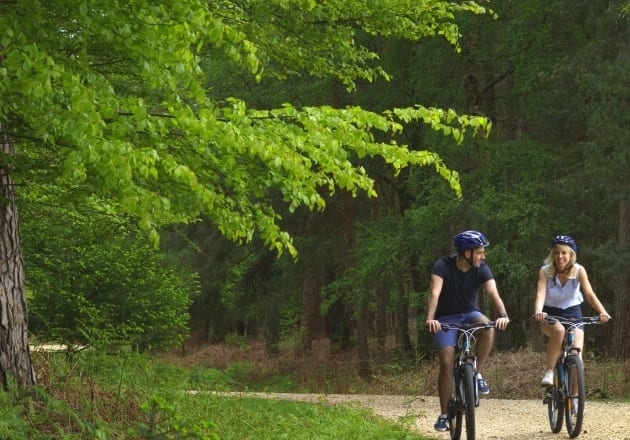
What Are the Best Cycling Routes in the New Forest?
Now, for the good part: planning your cycle route. There are many to choose from, so it’s easy to find one that suits your pace and interests.
The Old Railway (9 miles)
Following the “Castleman’s Corkscrew” tracks, this route from Brockenhurst to Burley offers a fascinating glimpse into the region’s transport history. The former railway path provides a flat, family-friendly cycle route with beautiful views across the forest. Look out for grazing ponies and perhaps even deer as you pedal along the trail.
Brockenhurst to Lyndhurst Loop (14 miles)
This popular circular route connects two of the New Forest’s most charming villages. Starting from Brockenhurst, you’ll travel along forest tracks and lanes to reach Lyndhurst, known as the ‘capital’ of the New Forest. The village makes a perfect halfway stopping point with its cafés and pubs before you complete the loop back through woodland trails.
Northern Forest Circular (17.8 miles)
For more experienced cyclists, this longer route explores the northern reaches of the national park. Expect rolling hills, expansive heathland views, and plenty of wildlife spotting opportunities. The route passes several country pubs – good spots for a well-earned break!
Family-Friendly Option: Rhinefield Ornamental Drive
If you’re cycling with children, the routes around Rhinefield offer gentle terrain and spectacular scenery. The tall Douglas firs and redwoods along Rhinefield Ornamental Drive create a magical atmosphere that will enchant younger riders, while the wide, safe paths keep stress levels low for parents.
Where Can You Hire Bikes in the New Forest?
Don’t worry if bringing your own bikes isn’t practical. The New Forest has hire facilities throughout the national park:
- Burley – New Forest Cycling offers a range of bikes including mountain bikes, hybrids and e-bikes.
- Brockenhurst – Cyclexperience provides bike hire right next to the railway station. It’s ideal if you’re arriving by train.
- Lyndhurst – The Woods Cyclery specialises in gravel bikes for forest tracks.
Most hire centres provide maps, route suggestions, and safety equipment. For families, child seats, trailers, and bikes in all sizes are readily available. Booking ahead is strongly recommended, especially during summer months and holidays.
Where Should You Stay for a New Forest Cycling Holiday?
Short Stay Homes offers several properties perfectly positioned for exploring the New Forest by bike. Our thatched cottages in Woodgreen and Hangersley provide charming bases for your cycling adventures.
For those bringing their bikes, Criddlestyle Cottage, Mews Hill, and Riverside Lodge all offer secure storage. These properties also feature private woodland, fishing rights, and even stabling if you fancy combining cycling with horse riding.
Arniss Lodge and Arniss Farmhouse are particularly well-suited for cyclists. They’re located next to Arniss Equestrian and have easy access to forest trails. The paddock provides space for children to practice their cycling skills before heading out to explore.
What Should You Pack for Your New Forest Cycling Adventure?
Beyond the obvious cycling essentials, consider these items for your New Forest bike ride:
- Weather-appropriate clothing (layers work best in the changeable British climate)
- Water bottles and snacks
- A basic repair kit and pump
- Phone with a mapping app or a printed route map
- A camera for capturing landscapes and wildlife
Planning Your Perfect New Forest Cycling Break
The New Forest is a fantastic place to cycle all year round. Spring and autumn offer mild weather and colourful scenery. Summer brings long days and lively trails. In winter, you’ll find peaceful paths and frosty views that make the ride feel fantastical.
Pair your rides with visits to local villages, historic landmarks, and hidden beauty spots. After a day exploring, come back to one of our cosy properties. Put your feet up and plan the next adventure. Whether you’re here for a full cycling holiday or just a relaxing break with a few rides thrown in, the New Forest has something for everyone.
Start Your New Forest Cycle Route with Short Stay Homes
Ready to start your trip? Book your stay online or get in touch with the Short Stay Homes team. We’d love to help you plan the perfect getaway.
Hampshire’s Best Countryside Beer Gardens
Looking for the perfect spot to unwind with a drink in the sun? Hampshire’s countryside is full of charming pubs where you can do just that. Picture a cold pint in hand, the scent of fresh food, and views of hills or riversides. From cosy historic inns to peaceful garden hideaways, these countryside pubs in Hampshire offer a relaxing escape from the everyday.
If you’re staying locally, why not make a holiday of it? Short Stay Homes offers luxury self-catering properties in beautiful Hampshire locations, including the New Forest. Our holiday cottages in Hampshire are pet-friendly, perfect for groups, and come with thoughtful touches like hot tubs and garden space. With local discounts on food, activities, and more, it’s a great way to explore the countryside – pubs included.
.png)
Why Are Hampshire’s Countryside Pubs So Special?
Hampshire’s mix of hills, rivers, forests, and coastal views creates the perfect setting for a countryside pub. Many sit in centuries-old buildings, full of charm and stories. Step inside and you’ll feel the character in every beam and brick.
What makes them stand out even more is their focus on local food and drink. Menus often feature Hampshire-grown produce, while the bar serves top-quality beer from nearby breweries.
It’s this mix of history, scenery, and great flavours that makes countryside pubs in Hampshire true destinations. Many are close to walking trails, too. Ideal for a well-earned pint after a day exploring.
Which Riverside Pubs Offer the Best Beer Gardens?
Hampshire’s riverside pubs combine great food and local ales. These are a few favourites where you can soak up the sunshine beside the water.
The Mayfly – Test Valley

Situated in the heart of the Test Valley near Stockbridge, The Mayfly is one of Hampshire’s most iconic riverside pubs. Its spacious beer garden sits directly alongside the River Test, offering uninterrupted views of the chalk stream. The garden has plenty of tables with full tableside service, allowing you to relax completely while watching kingfishers dart across the water.
The menu focuses on traditional pub classics done well, while the bar offers a variety of drinks. After enjoying your pint, you can explore the surrounding countryside via numerous walking and cycling routes.
The Greyhound On The Test – Stockbridge

This charming pub, dating back to the 1700s, is located in the historic town of Stockbridge, on the picturesque River Test. The riverside garden provides a tranquil setting for enjoying the impressive menu, which includes the famous Hot Smoked Test Trout Scotch Egg.
The Bush Inn – Ovington

Next to the River Itchen in the quaint village of Ovington near New Alresford, The Bush Inn offers a stunning beer garden that captures the essence of rural Hampshire. This Wadworth Brewery pub is located on the famous Pilgrims Way and boasts interesting historical connections.
Beer enthusiasts will appreciate their selection of local real ales, including Wadworths 6X and Henry’s IPA. The menu caters to all dietary requirements with vegetarian, vegan, and dedicated gluten-free options.
Where Can You Find Historic Pubs with Beautiful Gardens?
Historic countryside pubs pair rich heritage with beautiful garden settings. Two standout spots where history and hospitality go hand in hand are:
The Watership Down Inn – Whitchurch, Basingstoke

Tucked at the foot of the North Wessex Downs, The Watership Down Inn looks out over the Test Valley. This historic pub, dating back to the 1800s, was renamed several times before becoming the Watership Down.
The pub is open daily, serving high-quality lunch and dinner options to suit all dietary needs. Behind the bar, you’ll find a well-curated selection of local real ales. And if you’re not ready to leave, the Inn also has seven beautifully finished bedrooms, ideal for extending your stay in the Hampshire countryside.
The Bat and Ball – Hambledon

Cricket enthusiasts will delight in visiting The Bat and Ball. The pub is steeped in sporting history and is located in the tiny village of Hambledon (the “Cradle of Cricket”). Sitting opposite the historic Broadhalfpenny Down cricket pitch, this traditional English pub combines heritage with excellent hospitality.
The spacious beer garden provides ample room to enjoy their menu while taking in views of the Hampshire countryside. Inside, cricket memorabilia and artefacts tell the story of how this small village shaped a national sport, making it a must-visit for history buffs and sports fans alike.
Where Can You Find Coastal Country Pubs with Stunning Views?
From historic harbours to scenic terraces, these coastal pubs serve great food, local flavour, and a front-row seat to the shoreline.
The Still and West – Portsmouth
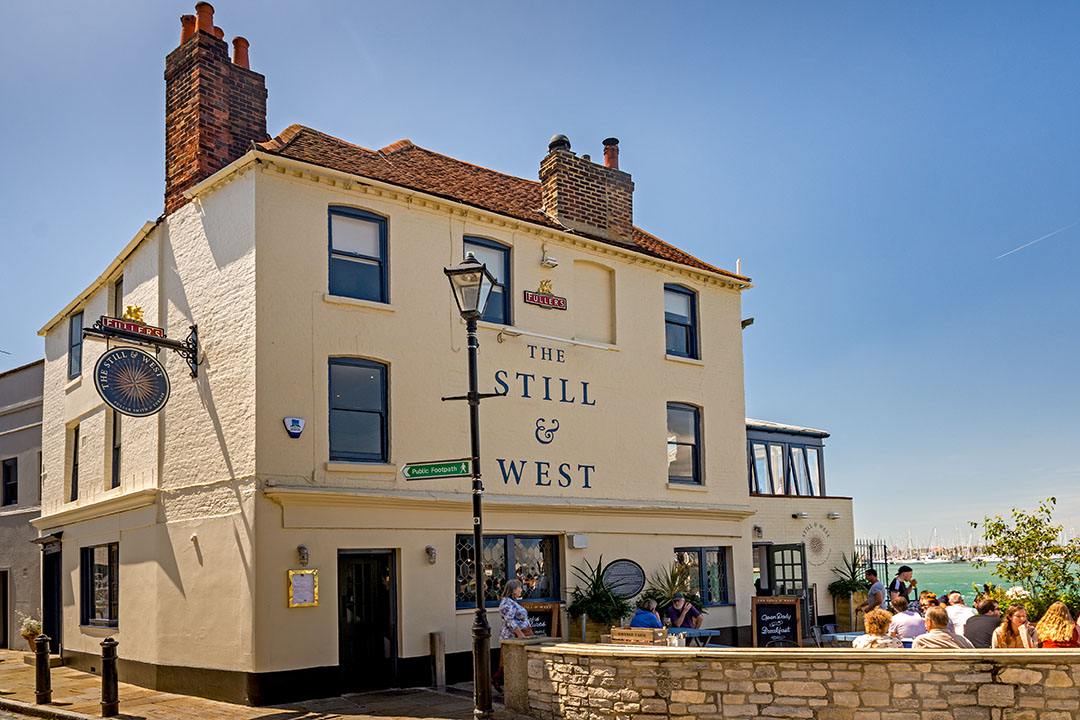
This Grade II-listed pub in Old Portsmouth combines nautical charm with modern style. The Still and West’s patio offers views over Portsmouth Harbour, allowing visitors to watch military ships and private yachts coming and going while enjoying a pint of real ale.
The family-friendly pub serves an impressive gastro-style menu that makes the most of its coastal location. Their beer garden provides one of Hampshire’s most unique outdoor dining experiences, blending countryside pub atmosphere with maritime panoramas.
The Ship Inn – Langstone
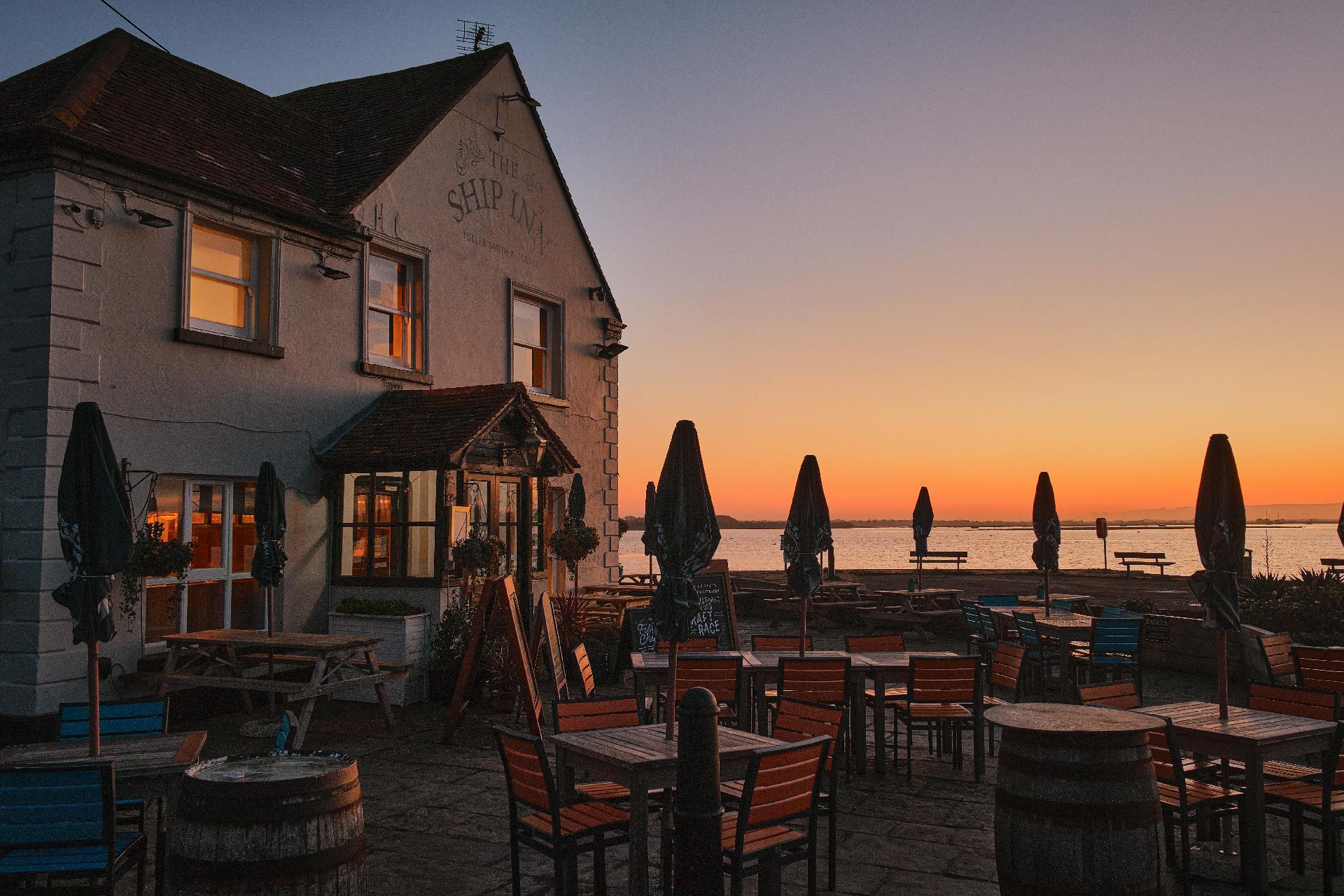
Starting out as a mill, The Ship Inn occupies a fantastic location overlooking Chichester and Langstone Harbours. The terrace lets customers enjoy the changing tides and passing boats while sampling their menu, which specialises in local fresh fish dishes.
Inside, the bars and restaurant resemble the interior of a ship with polished wooden planking and shining brass. Outside, the beer garden offers a peaceful spot to connect with Hampshire’s coastal countryside.
How to Plan Your Perfect Hampshire Pub Garden Visit
When planning your visit to Hampshire’s countryside pubs, consider combining your pub experience with local activities. Many establishments are near popular walking routes, historic sites, or natural attractions, making for a perfect day out.
Check opening times and menus in advance, as many pubs have seasonal offerings and special events throughout the year. To avoid disappointment, book a table if you plan to visit on a Sunday or during peak periods.
Make the Most of Your Time at Pubs in Hampshire
Hampshire’s countryside pubs offer more than just great food and drink. They’re a celebration of British hospitality at its finest. With historic charm, scenic beer gardens, and a friendly welcome at every stop, they capture the true spirit of rural Hampshire. Whether you’re a local or a visitor, these pubs promise memorable moments in beautiful surroundings.
Plan Your Visit with Short Stay Homes
Why not stay a little longer to make the most of your countryside escape? We offer a range of self-catering holiday cottages in the New Forest and Dorset, ideal bases for exploring the region’s best pubs at your own pace. After a day of hearty meals and local ales, you can unwind in the comfort of your own private retreat.
Browse and book online at Short Stay Homes or contact our friendly team if you have any questions.
Best Things to Do in Hampshire This Summer
Summer in Hampshire is something special. Think rolling countryside, stunning coastline, and a mix of great food, drink, and days out. Whether you’re here for a weekend or a longer break, this county has something for everyone: families, couples, and solo travellers alike.
Wander through the ancient woodlands of the New Forest National Park. Explore the rich history tucked into Winchester’s streets. Soak up the perfect blend of nature and culture at every turn.
At Short Stay Homes, we know the area inside out. As experts in luxury self‑catering holiday homes in Hampshire, we’ve put together this handy guide to help you make the most of summer in Hampshire.

Why Is Hampshire the Perfect Summer Destination?
Hampshire has it all – two national parks, miles of coastline, lively cities, and charming villages, all close together. In summer, you’ll enjoy warm weather, long days, and a busy calendar of events.
Unlike crowded tourist spots, Hampshire gives you room to relax. Start your morning in peaceful woodland, spend the afternoon by the sea, and end the day with a meal in a historic town without travelling far.
Explore the New Forest National Park
The New Forest National Park captivates visitors with its ancient woodland, open heathland, and famous wild ponies. Early mornings are perfect for spotting wildlife, when deer, ponies, and birds are most active.
For families, the New Forest Wildlife Park offers close encounters with indigenous and European wildlife in natural enclosures. Meanwhile, Beaulieu – home to the National Motor Museum, Palace House, and beautiful gardens – provides a full day of entertainment regardless of the weather.
Water lovers should head to the Beaulieu River, where New Forest Activities offers kayaking and canoeing adventures. The waterway winds through some of Hampshire’s best scenery, providing a unique perspective on the landscape.

Where Can You Find Hampshire’s Best Beaches?
Hampshire’s coastline is one of the county’s best-kept secrets. Less crowded than many UK beach destinations, it offers everything from pebble beaches to lively seaside towns.
Hayling Island
Hayling Island has miles of unspoilt coastline and Blue Flag beaches. The birthplace of windsurfing, it remains a hotspot for watersports enthusiasts. The funfair at Hayling adds classic seaside charm for families.
The Solent
The sparkling waters of the Solent provide a stunning backdrop for summer adventures. Watch sailing boats glide by from the beaches near Lee-on-the-Solent, or take a ferry to the Isle of Wight for a day trip.
Southsea
Southsea combines a pebble beach with amenities like gardens, playgrounds, and the fascinating D-Day Story museum. Don’t miss the magnificent Southsea Castle, built by Henry VIII, which offers panoramic views across the Solent.
What Family Attractions Shouldn’t You Miss?
-
Marwell Zoo near Winchester houses hundreds of animals across 140 acres of beautiful parkland.
-
Paultons Park, home to Peppa Pig World, delights younger children with rides and familiar characters.
-
Winchester Science Centre offers hands-on exhibits and an impressive planetarium.
-
Spinnaker Tower in Portsmouth provides breathtaking views across the harbour, city, and beyond.
How Can You Experience Hampshire’s Rich History?
Hampshire’s historical attractions transport visitors through centuries of fascinating heritage:
-
Winchester Cathedral is one of Europe’s largest Gothic cathedrals. It houses treasures like Jane Austen’s tomb and the Winchester Bible.
-
Portsmouth Historic Dockyard brings naval history to life with ships like HMS Victory and the Mary Rose.
-
SeaCity Museum in Southampton tells the compelling story of the city’s connection to the Titanic.
-
Whitchurch Silk Mill is the oldest silk mill in Britain still in its original building. The mill offers a glimpse into Hampshire’s industrial past.
Where Are the Best Walking and Cycling Routes?
South Downs National Park
The chalk hills of the South Downs provide walking trails with vistas. The South Downs Way runs through the heart of the park, with sections perfect for day walks.
Test Valley
The picturesque Test Valley features riverside paths alongside the famous chalk streams. Look out for kingfishers darting across the waters as you stroll through the landscape.
East Hampshire
East Hampshire’s woodland trails offer welcome shade on hot summer days. The Hangers Way provides 21 miles of varied walking through some of the county’s most beautiful countryside.
What Summer Events Bring Hampshire to Life?
-
Country shows celebrate rural traditions with livestock displays, crafts, and local food.
-
Maritime festivals in Portsmouth and Southampton showcase the county’s seafaring heritage.
-
Open-air theatre performances bring drama to stunning garden settings at venues like Exbury Gardens.
-
Food festivals highlight Hampshire’s exceptional local produce and culinary talent.
How to Make the Most of Your Hampshire Summer Stay
Make one of Short Stay Homes’ luxury self‑catering properties your base this summer and enjoy the very best of Hampshire. Our New Forest and Dorset homes are ideal starting points for exploring the county.
Many of our properties include outdoor spaces, perfect for al fresco dining and unwinding after a day out. Plus, our local knowledge means you’ll find the well-known sights and the hidden treasures that make a holiday memorable.
We also help you get more out of your stay by offering guest discounts on local activities, from golf and fishing to dining and days out. It’s a great way to experience more of Hampshire while supporting the surrounding communities.
Partner with Short Stay Homes
Whether you’re after a woodland retreat or a coastal hideaway, we offer the perfect home from home for your summer in Hampshire. Get in touch today to find your ideal escape.


